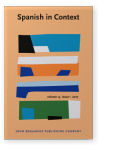Vol. 14:1 (2017) ► pp.28–52
Compremos como galegos
Addressing the future to create an imaginary Galician world and to increase sales
This work investigates a place of intersection between advertising and politics in Galicia, namely the series of television spots created by the supermarket chain GADIS under the title Vivamos como galegos. Most studies of this series have focused exclusively on the first spot and have argued that the success of the ad is due primarily to the way it makes Galician identity attractive. While agreeing that this factor is important, the present analysis expands on previous studies by analyzing rhetorical devices in and intertextual relationships between five ads in the series to argue that these spots discursively create an imaginary world in which Galician language and culture are timeless and will not be lost. This ideal characteristic responds to a current concern of Galician society, namely, the decreasing use of the regional language among youth. In creating this Galician world, GADIS discursively paints itself as a defender of all things Galician, which has led it to become “a campaña de maior éxito do momento” (Souto 2008, 199).
Article outline
- 1.Introduction
- 2.The Galician context
- 2.1Historic trends
- 2.2Decreasing use of the Galician language among youth
- 3.The GADIS advertisements
- 3.1Vivamos como galegos (2007)
- 3.2Maloserá (2009)
- 3.3Sairemos como Galegos (2012)
- 3.4Se chove, que chova (2013)
- 3.5Soñemos como galegos (2014)
- 4.Theory and methodology
- 5.Analysis
- 5.1In-group creation
- 5.2The continuity of Galician identity
- 6.Discussion
- 7.Conclusion
- Notes
-
References
This article is currently available as a sample article.
